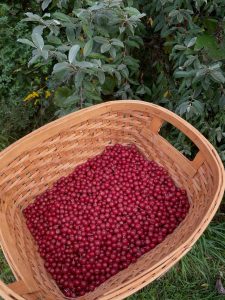Page Created by Connecticut Foraging Club
Upcoming Events | Meet the Instructors | Plant Archive | Mushroom Archive
----------------
Upcoming Events | Meet the Instructors | Plant Archive | Mushroom Archive
----------------
Common Daylily (Hemerocallis fulva) is a perennial plant that was brought here from Asia as a garden ornamental. It has since escaped cultivation and is now considered invasive in many states.

Common daylilies can be found in fields and roadsides. They have the ability to form dense colonies, displacing native plants. The plant reproduces by underground rhizomes. Spread can be controlled by digging up the rhizomes, but the plant can regrow if even a small section of the root is left in the ground.

Common daylilies can be identified by their leaves which are folded in half and facing each other in opposite pairs. The plant produces orange blossoms that bloom for a single day June-July.

There are thousands of Daylily cultivars which are not considered invasive. It is unclear whether all cultivars are edible. Some may taste bad, or cause stomach upset.

Daylilies have been consumed in Asia for thousands of years.

Shoots can be consumed raw or cooked in spring when the leaves are less than five inches long. After this point, they become too fibrous. They have a crisp, mild onion taste.
Tubers can be collected fall or early spring. They should be scrubbed clean and then can be consumed raw or cooked as a potato substitute.
Unopened flower buds can be harvested in the summer and consumed raw or cooked. They have a flavor reminiscent of green beans.
Flower petals can be added raw to salads or added to soup to add a gelatinous quality.
Some people have allergies to daylilies. As with any new plant, only a small amount should be consumed the first time.
--
Written by Amy Demers, founder of the Connecticut Foraging Club. To learn more about foraging in Connecticut, check out our upcoming classes.






